The Indo-Pacific as a geo-political idea has been in the currency since the last couple of years. In the year 2019 the idea seems to have gained more acceptance. In some measures, the stakeholders are working towards giving shape to this idea. Some countries have published exclusive Indo-Pacific strategic and political documents, whereas in the case of India, the policy direction is discernible through the visits and statements of the leadership.
This brief looks into prominent developments that took place in the Indo-Pacific region in the past one year. The Indo-Pacific region here is understood from India’s perspective. The developments are classified as doctrinal, political, electoral, economic and military. India’s Indo-Pacific geography extends from its west coast- the Arabian Sea and West Asia, the Indian Ocean, East coast of Africa, the Bay of Bengal, across the Malacca and farther into the Pacific Island-states. This year, rather interestingly, the Indian Indo-Pacific vision seems to stretch northward to include Russia. Thus, New Delhi has added a North-South dimension to a generally East-West geopolitical space. By this it has also added a continental element to the otherwise maritime idea.
The government deals with the vast geography of Indo-Pacific in the order of priority. For the purpose of this brief, the area of focus has been India’s South Asian neighbourhood, Southeast Asia and farther East. The developments in West Asia and Eastern Africa are not included since those are covered by other experts of the Vivekananda International Foundation.
Doctrines
This year four documents on the subject of Indo-Pacific were promulgated. These can be understood as policy papers. The US published two of these documents, one from the French and one from ASEAN. Amongst these, the US and France’s documents are strategy documents, as they are best understood- they define their threats, the quantum of forces, planning etc. On the other hand, the ASEAN document is diplomatic and political and found lacking in security strategy.
The four publications however, had some common themes. These were inclusivity, rules-based order, and the importance of trade and economic growth.
While India has not published any white paper on the Indo-Pacific, an indication of India’s approach to this region is discernible through various speeches of the prime minister, the speeches and interactions of the minister of external affairs, and from the Indian Navy. India’s understanding of the territorial limits of the Indo-Pacific is from the east coast of Africa, maritime West Asia to the Pacific Islands. France’s understanding of the expanse of the Indo-Pacific is nearly identical to India’s.
US:
The Department of Defense has authored ‘Indo-Pacific strategy report: preparedness, partnerships and promoting a networked region.’ This paper, published in June 2019 is a strategy document with clear description of threats to US’s security- China. Other concerns include Russia which is termed as ‘revisionist malign actor’. It speaks of China-Russia collaboration to undermine the US in multilateral fora. North Korea is described as a rogue state. It lays out the Indo-Pacific strategy as preparedness (the force), partnership (allies as force multipliers) and a networked region (networked security architecture) (Defense 2019)
The second document from the US was published by the Department of State in November 2019. It is titled ‘A free and open Indo-Pacific – advancing a shared vision.’ This is an overview of US’ initiatives in the Indo-Pacific such as the blue dot campaign for quality infrastructure and US investments in human capital. It also raises normative issues in the economy (reducing cost of doing business, inclusion of women). Amongst the important partners, a special space is dedicated to India. (US Government 2019)
France
The Defence Ministry of France published ‘France and security in the Indo-Pacific’. The French document contains several maps of the Indo-Pacific, each representing the following: French overseas territories and population, its military presence, its trade in this region. France has 7000 personnel throughout the region- 4100 in Indian Ocean and 2900 in the Pacific. It has five joint-regional commands in UAE, Djibouti, South Indian Ocean, New Caledonia and French Polynesia.
For France the main security concerns are North Korea and ballistic missiles, terrorism, the South China Sea, challenges to UNCLOS, maritime security, climate change and environmental degradation. There is no direct mention of China although it has been alluded to in a subtle manner.
The document lists two strategies for this region. Under the ‘Military Programming Law’ 2019-2015’ France would undertake ‘exceptional military build-up to adopt its defence systems to evolving security challenges’. Under this, France would be supporting capacity building of its partners. France has identified India, Australia, Japan, Malaysia, Singapore, New Zealand, Indonesia and, Vietnam to be embedded into France’s ‘network of strategic partnerships. France lists out its plan for the Indo-Pacific in three points: 1) Network of regional security architecture 2) Being active in multi-lateral fora 3) Closer cooperation with ADMM +, ASEAN + members. The document mentions about means of possessing high-level intelligence gathering and acquiring force projection platforms. France’s plan would be shaped around network of regional security architecture, being active in multi-lateral fora, and close cooperation with ADMM+ and ASEAN+ members. (Ministère des Armées 2019)
ASEAN
The ASEAN published the ‘ASEAN Outlook on the Indo-Pacific’. ASEAN members were reticent to use the term Indo-Pacific for quite some time, and they had continued to use ‘Asia-Pacific’. This was because Southeast Asia saw the Indo-Pacific as excluding China. The Indo-Pacific Outlook therefore seems that ASEAN has come to accept the term to a certain extent only. This is because the document refers to the Asia-Pacific and the Indian Ocean as two separate entities and not as a compound ‘Indo-Pacific’ term.
Albeit it is said that there are differences over usage of this term within ASEAN. In fact even this document was made after considerable effort, the members were not on the same page. The present document is said to be pushed for by Indonesia.
In terms of the content, there is nothing exciting that comes from ASEAN. It is the standard choice of words found in any ASEAN statements. It talks about ASEAN centrality and prescribes Southeast Asia, for its location; to be seen as the core of any other country’s Indo-Pacific strategy. Further, ASEAN imagines Indo-Pacific architecture or institutions to be based upon existing ASEAN mechanisms such as ADMM, ARF, East Asia Summit.
The ASEAN Outlook has listed few specific areas for cooperation in connectivity (air and digital), economy (small and medium enterprises, trade and logistics, research and development, digital economy) and Sustainable Development Goals. But these are more of ideas, since no executive mechanisms are provided. (ASEAN Outlook on the Indo-Pacific 2019)
India has welcomed the ASEAN outlook and at several instances the official position on Indo-Pacific has upheld the centrality of ASEAN. In fact India supports the ASEAN Outlook.
Political Developments
Elections
Five nations in the Indo-Pacific- India, Sri Lanka, Thailand, Indonesia, Australia, held general elections this year. Except for Sri Lanka, the verdict was pro-incumbency. In India Narendra Modi came back with an overwhelming majority. A political status-quo is expected to remain for the next five years.
In April this year Indonesia went to elections. President Joko Widodo ‘Jokowi’ was elected back in office; albeit with smaller margin than what was expected. Indonesian citizens have enjoyed higher purchasing power in the last five years even though the cost of living increased. Corruption and religion were two issues in this election. Jokowi is seen as incorruptible and trustworthy while his opponent political parties have been accused of corruption (Vatikiotis 2019). In his second term, Jokowi has had to show his religiosity; one by making a trip to Haj three days before the polls and second, by choosing an Islamic Cleric Ma’ruf Amin of Nadatul Ulema as his running mate. This partnership helped Jokowi win from the Muslim-dominated regions of Central Java and East Java. These actions from Jokowi are a reflection of what has been seen as increased role of religion in society and politics of Indonesia. In his second term, Jokowi will be challenged by the task of uniting the country that has been religiously polarised(ibid.) Apart from meeting the cultural challenge, Jokowi will have to focus on economic development. The much talked-about ‘Global Maritime Fulcrum’- the flagship policy of Jokowi’s first term, is said to be slowing down. Infrastructure projects are embedded in malfeasance. It is said that Jokowi favours public-centre enterprises. With respect to investment in infrastructure projects. Jokowi also favours concessional loans from China and Japan, leaving little or no room for foreign investors. (Maulia 2019)
Elections in Australia saw an unexpected victory for the conservatives. The general atmosphere in the media had predicted win for the Labour. Labour’s stance on ending tax breaks to investors and shareholders cost them votes. Conservatives were backed by the coal lobby so Labour’s tougher stance on emission (Morton 2019) did not get much traction. Both parties also differed on immigration policy and on refugees. Conservatives wanted to reduce the permanent immigrants from 190,000 to 160,000 per year and limit the refugee intake to 18750. The Labour wanted to increase the refugee intake to 27,000 in the next 7 years. (Okutsu) But both the parties have similar stand when it came to increasing the defence budget to 2 per cent to match the NATO standards. Likewise, there was not much of a difference with respect to Australia’s foreign policy, though Labour emphasizes on the Asia-Pacific region and the global institutions. Critics also argue that the Coalition has a clear policy on the South China Sea, whereas the Labour does not have any. (Henry 2019)Japan, Indonesia and China are the most important countries for Australian policy in Asia. Australian domestic politics only until recently were rife with instability with allegations of China’s involvement.
However, in this election campaign China was not an issue at all. Labour and Conservatives both seem to have arrived at a common ground with respect to their policy on China (Okutsu 2019).
Thailand went to election in March 2019. This is the first election after a new constitution was introduced in 2017 by the Thai military. Under the new constitution a mixed electoral system is in place wherein the electorate votes for 500-seat lower house, and the members of the 250-member upper house are appointed by the military (Rattanasevee 2019). There is a ceiling on the number of seats a party can win. (Reuters 2019) Seats in the lower house are allotted on the basis of vote share. (Lee 2019) This arrangement maintains Thai military’s dominance in the political system. Pheu Thai party of Thaksin won more seats in the lower house (7.9 million votes) but as things are under the new system, the Thai military is the real king maker. It has therefore come as no surprise that Palang Pracha Rath of General Prayuth O Cha won. The most interesting development in Thai politics is the emergence of a new political party called ‘Future Forward Party, (FFP)led by a 40-year old billionaire Thanathorn Juangroongruangkit. This party promised freedom from politics and end to the old guard. The party has become very popular amongst youngsters. FFP wants to be the third alternative to the royalist-backed junta and forces backed by Thaksin Shinawatra. In November this year, Thanathorn Juangroongruangkit was disqualified as the Member of Parliament for his conviction for violating the election laws. (BBC 2019) An action against the new leader was always anticipated from the ruling dispensation.
Sri Lanka held presidential elections this year. The contenders for the post were Gotabaya Rajpaksha and Sajim Premdasa, who served as deputy to then president Sirisena. With 52.25% votes. Some analysts see Gotabaya victory as a win for China because during the tenure of Mahinda Rajapaksha, Chinese investments in Sri Lanka had increased. However, at his oath taking ceremony, Gotabaya announced that Sri Lanka would have friendly ties with all countries. He also stated that in an event of international conflict or the one involving major powers, Sri Lanka would remain neutral. (India Today 2019) This direction of Sri Lanka’s foreign policy and, development were the two issues that the new president spoke about in his very first address to the nation. The general analysis that Gotabaya’s win is a win for China and a loss for India appear unfounded. (Rajpaksha 2019)
Balakot Airstrikes
In February 2019 a deadly suicide attack on a CRPF convoy in Pulwama in the Indian state of Jammu and Kashmir rocked the nation. The attack was carried out by Jaish-E-Mohammad (JeM) that is supported by Pakistan. In retaliation, the Indian Air Force conducted deep strike inside the Pakistan-occupied Kashmir and destroyed the terror facility at Balakot. This bold move exposed Pakistan’s bluff of nuclear attack. India handled this matter with greatest statecraft- it received support after the terror attack. India’s airstrikes did not invoke any international condemnation. This episode is very significant for Indian diplomacy. It showed the wide support India received and the confidence it has under the new leadership. India has always been seen as a soft state and so these strikes could be said to have made some headway in changing that perception. (Karambelkar 2019)
Bilateral Relations
Japan and South Korea
Japan and South Korea had tensions between them this year. It started off as a trade dispute when in July Japan prohibited the sale of three chemicals to South Korea. These chemicals are critical to produce semi-conductors. (Pham 2019) South Korea leads is manufacturing of semi-conductors and is critically dependent on Japan for this. As a consequence, Seoul terminated intelligence-sharing agreement with Japan. To this, Japan responded by keeping South Korea off its export control white list of friendly countries. (ibid.)
The US did not intervene in this matter initially. President Obama had tried to maintain good relations between Japan and South Korea but the approach of President Trump is different. He did not personally intervene. His Secretary of State Mike Pompeo tried to reconcile his two allies but it was not successful. (Kim 2019) In the event of two of US’s allies engaged in a trade war, China would have the last laugh. It is also said that China would take advantage of this situation and attempt to harness the semi-conductor technology. (Jeong-ho 2019)
70 years of India-Indonesia bilateral relations
2019 marked 70 years of diplomatic relations between India and Indonesia. Both the countries have always built the narrative on ancient ties and cultural affinity. This has indeed been true. However, the two nations are moving beyond the soft power template. (Rajeev Ranjan Chaturvedy 2019) India’s attention to its maritime domain since the last decade has seen a perceptive reset of its existing relationships and of its neighbourhood. Indonesia has been referred to as India’s neighbor- the idea of neighbourhood now no more limited to continental understanding. The emerging Indo-Pacific framework has served as catalyst in the bilateral relationship. (Chaudhury 2019) Indonesia sees itself as an important actor in the Indo-Pacific owing to its location and as the leader of ASEAN. (Weatherbee 2019)President Jokowi’s promulgation of Indonesia as ‘Global Maritime Fulcrum’ also provides avenues for bilateral cooperation in infrastructure and port development and connectivity. In the changing geo-political realities of Asia, India and Indonesia have common interest in a rules-based, multipolar world.
Hong-Kong Protests
The protests in Honk-Kong that began on 9th June 2019 over the controversial extradition bill continue even as the year comes to an end. The bill was withdrawn on 4th September 2019. Yet the protests continue, and now it has assumed a general anti-China nature. China has accused the US of having a hand in these protests. (Singh 2019) If it is true, then the Hong-Kong protests are indicative of the various forms through which Sino-US rivalry manifests.
Maritime Developments
Two categories of incidents took place in the Indo-Pacific this year- one involving maritime conflicts and the other were military maneuvers and exercises. The maritime conflicts took place in the South China Sea between Vietnam and China and another involving Philippines and China. Another international conflict took place in the Straits of Hormuz between Iran, and the UK.
West Asia
Indian strategic planners had always thought of a scenario where the tensions in the Strait of Hormuz would impact India. Such incident did take place this year. Tensions between US and Iran were simmering since June with Iran shooting down a US drone (June 20), tankers attacked in the Gulf of Oman (June 13), rocket attack on oil headquarters in Basra (June 19), US downed an Iranian Drone (July 18) and seizure of British-flagged merchant vessel Stena Impero (July 19). The seized British Ship, Stena Impero had 18 Indians on board as part of its 23-member crew. (Barbara Starr 2019) A bilateral issue between US and Iran can have serious regional and international implications.
In September 2019, the Saudi oil refinery named Aramco- the largest oil refinery in the world was attacked, allegedly by drones. Yemen-based Houthi rebels took responsibility. They also attacked Khurais oil field. Both Khurais and Abqiaq refineries are crucial linkage sin the global oil supply. The attacks disrupted oil output by 50 per cent of Saudi’s production. It reduced the daily global oil supply by 5 per cent. The US however, blamed Iran for the attacks. According to the United States on 20th December, the latest evidence and analysis of weapon debris pointed that the attack or originated from the North, which US says bolsters its earlier claim of Iranian involvement. (Pamuk 2019)
South China Sea
In the South China Sea, Vietnam and China were involved in a standoff for well over four months in the Spratlys. This was not the first standoff of such a kind, in terms of disputed parties asserting their control over the maritime territory. What made this episode noteworthy was the duration. The Chinese survey ship continued to remain in waters claimed by Vietnam in spite of international attention. The Chinese also demonstrated the ability to maintain a sustainable presence in waters away from its shores. The Chinese ship sailed away to its reclamations in the South China Sea, refueled, and resumed its survey activities in the Spratlys. Viet Nam, rather unexpectedly held on to its turf as well. While the establishment ensured that the episode remained low-key in public domain, Vietnam had deployed its naval vessels in the standoff. This was alongside the diplomacy that Hanoi was engaged in with Beijing. It may have also impressed upon Southeast Asian states that the China challenge is real and their policy of equidistance has limitations. The international support to Vietnam and condemnation of China’s actions came much delayed. India, US, France and the UK issued statements calling for freedom of navigation in the South China Sea.
In the second instance, China and Philippines experienced tensions. A Chinese maritime militia reportedly hit a Philippines fishing vessel and nearly drowned its crew. The Philippines administration constituted a committee to investigate the matter and the findings put the blame on China. However, and despite public pressure, President Duterte of Philippines shelved this report and brushed the incident under the carpet. (Karambelkar 2019)He has been criticised domestically for going soft on China but that seems to have made little impact.
This year Duterte also agreed to China’s proposal of revising the UNCLOS (Romero 2019). China wants to expand the concept of historical rights and historic claims so as to get favourable access in the South China Sea. Further, it also desired that foreign vessels seek permission before passing through territorial waters. As per existing provisions, no such permission is required for innocent passage of vessels. According to Article 121 of UNCLOS, inhabitable rocks cannot provide for Exclusive Economic Zone and continental shelf. China seeks revision of this provision too. (Santos 2019)
The South China Sea this year exemplified the challenge of grey-zone tactics. These actions are de-stabilising and can raise security concerns significantly, yet limit a state’s actions to take effective measures. (Brands 2016) Any misstep or miscalculation has the potential to spiral up the conflict. Both Vietnam and China, one may say; were testing waters; and perhaps the rest of the stakeholders too. While no significant actions were taken, but the concerned parties- including the extra-regional ones, must have observed the incidents closely.
The general rhetoric in the region has been raising doubts over US’s commitment to in Asian allies. While these perceptions may have some kind of underlying weight, it is not entirely accurate either. The US in September this year conducted a military exercise with ASEAN called Ex. AUMX (US Indo-Pacific Command 2019). The exercise, the first between US and ASEAN, involved all the ten members of ASEAN. Myanmar was also part of this exercise even as US had imposed sanctions on it for its human rights record. The theme of the exercise was to work on shared maritime security priorities in the region. It took place in the Gulf of Thailand and in the South China Sea. (Zhang 2019) Under the Trump administration, the US Navy has conducted several freedom of navigation operations (FONOPS) in the South China Sea.
The United Kingdom’s HMS Enterprise made its maiden Asia-Pacific tour, with Singapore as its first stop. (Enterprise 2019) The first such deployment is indicative of UK’s attempt at making a presence in the South China Sea.
Military Developments
In September 2019 the US Navy deployed a new over-the horizon anti-ship missile called Naval Strike Missile (NSM) on one of its Littoral Combat Ships (LCS), LCS Giffords. (Larter 2019) LCS Giffords was deployed in the Indo-Pacific theatre. The exact location was not disclosed. The Raytheon NMS is said to have the range of over 90 kms, 30 kms longer than the Harpoon at 67 kms. The LCS was also equipped with a new mission-capable drone- MQ 8C Fire Squad Drone. (ibid.) The Navy has indicated that the NSM will be also fitted on its small surface combatant, FFG (X). The NSM has been inducted month s ahead of its original schedule. This deployment is seen as a move to counter China’s ventures in the Pacific. The surface fleets (LCS) are intended to maintain a forward presence in the Pacific in the near future. As the number of LCS increase, the US would be able to have a sustained presence in the South China Sea. (ibid.) The NSM would also reinforce US naval presence as it operated in the Russian and Chinese anti-access waters. (Larter 2018) The critics from inside the US feel that the USN has been too slow with its development, particularly with respect to the unmanned systems. As mentioned earlier, the rhetoric of US retreat from Asia is not entirely accurate.
In July 2019 India issued a 2000- crore tender to procure about 100 heavyweight torpedoes for its six Scorpene-class (Kalvari) submarines. The immediate requirement was fulfilled through the foreign vendors but eventually these would be produced domestically. (Swarajya 2019) In October 2019 India issued an RFP for next generation submarines under Project 75I. As per reports, the new submarine is expected to be a super-Scorpene-class- larger than the current platform with the displacement of 3000 tonnes. France would be offering these new submarines. (Indian Defence Research Wing 2019)
This year the US withdrew from the Intermediate-Range Nuclear Forces (INF) treaty on 2nd August 2019. The announcement of withdrawal was made in February 2019. The reason for withdrawal was ‘Russia failed to return to full and verified compliance through the destruction of its noncompliant missile system—the SSC-8 or 9M729 ground-launched, intermediate-range cruise missile.’ (US Department of State 2019) US’s withdrawal is said to lead to a nuclear arms race. (Sputnik News 2018) The impact of this decision will be felt all over the world, some argue. (Patil 2019)
Economic Developments
US-China Trade war
The Sino-US competition had its fallout in the economy this year. When two major economies of the world, the growth engines of the global economy become adversarial, the impact can be felt across the world. At this point in time, it is evident that the US is still the most powerful in the world- not only militarily but also economically. In the future, the extent of economic enmeshment and its impact on great power rivalry would be an unprecedented phenomenon to watch for.
India’s Withdrawal from RCEP
In a rather unexpected move, India withdrew from the Regional Comprehensive Economic Partnership (RCEP) agreement. After due domestic consultations it was felt that RCEP membership will be gravely disadvantageous (Yuvejwattana, Pradhan and Kumar 2019). India may have passed for now (The Economic Times 2019), but the issue also raises the more pressing matters- the state of Indian manufacturing industry. It would be worth the self-introspection as to why, even after nearly three decades of liberalisation and privatisation, the Indian manufacturing cannot compete globally. Policymakers cannot dodge this anymore. Second, the move also shows the limits of an over-arching Indo-Pacific architecture- in the economy at least. The region is indeed very diverse. Therefore, it may be wise to move gradually when it comes to institutionalizing any cooperation in this region. ASEAN was very keen on India’s RCEP membership, so as to serve a bulwark against Chinese economic domination. India has assured the ASEAN than it would negotiate separate deals, or that it has FTAs already. That the other members, including China have stated that the door is open for India, goes on to show India’s weight. But without being much euphoric about it, India needs to work on its economy and make it more globally integrated.
Strategic and Foreign Policy Developments
Trump’s Absence from ASEAN Summit
President Donald Trump cancelled his visit to the ASEAN summit in Bangkok this year and sent Robert O’Brien, national security advisor in his stead. (Kurtenbach 2019) ASEAN leaders did not appreciate this and expressed their resentment to the US representatives. Trump however, did invite all the ASEAN heads to Washington later for a meeting. This was hardly met with any enthusiasm from ASEAN, on expected lines. (Freeman 2019) The regional perception sees Trump presidency as less involved than his predecessor. President Trump’s withdrawal from the Trans-Pacific Partnership (TPP) also raised doubts regarding his commitment to Asia.
China’s Influence in the Pacific Island-States
This year Solomon Islands and Kiribati cut off diplomatic relations with Taiwan and established relations with China. This is said to be a big blow to Taiwan. China’s growing influence in the Pacific Island states is of concern to US, Australia and New Zealand. Many of the island-states have agreed to be part of the Belt and Road Initiative. Pacific-Islands countries are highly concerned with climate change, since it threatens their existence. Trump has shown disdain towards climate change and this is said to be the factor for the islands’ proximity towards China. The attraction of Chinese investments and aid is said to be another factor.
QUAD
This year the Quadrilateral Security Dialogue, (QUAD) held amongst US, India, Japan and Australia was elevated to ministerial level. The foreign ministers of the four democracies held their first meeting in September 2019 at the sidelines of the UN General Assembly meeting. (All India Radio 2019)
This is a significant move, given how the endeavour until now was to keep it low key and therefore was limited to secretary level. It was being deliberately kept piped down due to the fears amongst other partners of the QUAD members, who see it as a possible alliance against China. The official line from all the four countries is that the grouping is not directed against anyone. It also emphasized on ASEAN centrality to the Indo-Pacific.
Indo-Pacific Oceans Initiative
Prime Minister Narendra Modi proposed an Indo-Pacific Oceans Initiatives for safe stable and secure ocean environment. This announcement was made at the East Asia Summit in November 2019. The idea of this proposal is to enhance maritime security, sustainable use of marine resources, disaster management and prevention (Chaudhury, PM Modi proposes Indo-Pacific Oceans Initiative 2019). There is no further information on this, as to what this is going to translate into, or if New Delhi has any proposal for institutionalising this proposal.
India’s Indo-Pacific Engagement
The Indian diplomacy had a very busy calendar this year. The prime minister had personally driven the foreign policy when he assumed office in 2014. In his second term, Mr. Modi appointed former foreign secretary, S. Jaishankar as the Minister of External Affairs. This appointment has transformed the Indian foreign policy by way of better articulation, better outreach, clarity and deftness.
The outreach in the Indo-Pacific can be seen through the bilateral and multilateral meetings this year. The engagement was driven from four offices- The president of India, the prime minister, the vice-president and the minster of external affairs. (This is barring the engagement from the Ministry of Defence) The details of the outgoing visits of 2019 can be found below:
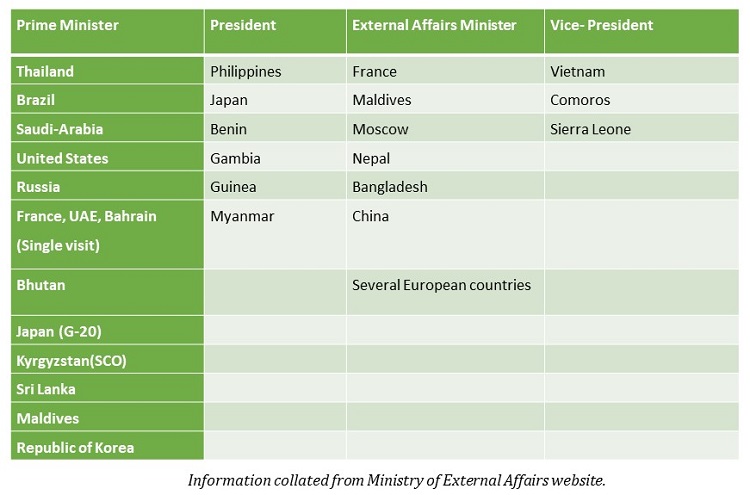
References
- All India Radio. "Quad foreign affairs meeting between US, Japan, India, Australia held on sidelines of UN General Assembly." Sepember 29, 2019. ASEAN Outlook on the Indo-Pacific. Association of Southeast Asian Nations, 2019.
- Barbara Starr, Ryan Browne, Kara Fox. Iran announces capture of British-flagged oil tanker; US officials say two ships seized. July 20 2019, 2019. https://edition.cnn.com/2019/07/19/middleeast/british-tanker-seized-iran-intl/index.html (accessed November 7, 2019).
- BBC. Thanathorn: Thai opposition leader disqualified as MP. November 21, 2019. https://www.bbc.com/news/world-asia-50486754 (accessed January 1, 2020).
- Brands, Hal. Paradoxes of the Gray Zone. February 5, 2016. https://www.fpri.org/article/2016/02/paradoxes-gray-zone/ (accessed March 26, 2019).
- Chaudhury, Dipanjan Roy. India, Indonesia have shared vision on Indo-Pacific & territorial integrity: Jaishankar. September 5, 2019. https://economictimes.indiatimes.com/news/politics-and-nation/india-indonesia-have-shared-vision-on-indo-pacific-territorial-integrity-jaishankar/articleshow/71000130.cms?from=mdr (accessed October 10, 2019).
-"PM Modi proposes Indo-Pacific Oceans Initiative." The Economic Times, November 5, 2019. - Defense, Department of. Indo-Pacific Strategy report: preparedness, partnerships and promoting a networked region. The Department of Defense, United States Government, 2019.
- Enterprise, HMS. The Royal Navy, September 25, 2019.
- Freeman, Joe. "ASEAN leaders snub US meeting after Trump skips ASEAN summit ." The Jakarta Post, November 4, 2019.
- Henry, Iain. Australia struggles for clarity on the South China Sea. The Lowy Institute. May 14, 2019. https://www.lowyinstitute.org/the-interpreter/australia-struggles-clarity-south-china-sea?utm_campaign=Brand2019&utm_medium=social&utm_source=twitter (accessed May 18, 2019).
- India Today. Gotabaya Rajapaksa takes oath as Sri Lanka's President, vows to be neutral in international matters. November 19, 2019. https://www.indiatoday.in/world/story/gotabaya-rajapaksa-sworn-in-as-sri-lanka-s-president-vows-to-be-neutral-in-international-matters-1620251-2019-11-18 (accessed November 20, 2019).
- Indian Defence Research Wing. France to offer Brand New submarine for India’s Project-75I Tender. October 6, 2019. http://idrw.org/france-to-offer-brand-new-submarine-for-indias-project-75i-tender/ (accessed October 10, 2019).
- Jeong-ho, Lee. How China can win a ‘trade war’ between Japan and South Korea. July 10, 2019. https://www.scmp.com/week-asia/geopolitics/article/3017918/how-china-can-win-trade-war-between-japan-and-south-korea (accessed November 15, 2019).
- Karambelkar, Amruta. India's post-Pulwama response. April 3, 2019. https://www.vifindia.org/2019/april/03/india-s-post-pulwama-response (accessed January 1, 2020).
- Recent Maritime Incidents in the South China Sea. July 31, 2019. https://www.vifindia.org/article/2019/july/31/recent-maritime-incidents-in-the-south-china-sea (accessed December 15, 2019). - Kim, Catherine. The escalating trade war between South Korea and Japan, explained. August 9, 2019. https://www.vox.com/world/2019/8/9/20758025/trade-war-south-korea-japan (accessed November 15, 2019).
- Kurtenbach, Elaine. "Trump skips ASEAN meet, sends security adviser O’Brien, Ross." The Associated Press, October 30, 2019.
- Larter, David B. The US Navy’s new ship-killer missile slated to make its fleet debut much sooner than expected . October 24, 2018. https://www.defensenews.com/digital-show-dailies/euronaval/2018/10/24/the-us-navys-new-ship-killer-missile-slated-to-make-its-fleet-debut-much-sooner-than-expected/ (accessed December 5, 2019).
-US Navy deploys new ship-killer missile to China’s backyard. September 5, 2019. https://www.defensenews.com/naval/2019/09/06/the-us-navy-just-deployed-its-new-ship-killer-missile-to-chinas-backyard/ (accessed September 13, 2019). - Lee, Yen Nee. Thailand held an election more than a week ago — voters still don’t know who won. April 1 , 2019. https://www.cnbc.com/2019/04/01/thailand-early-election-result-has-palang-pracharat-pheu-thai-leading.html (accessed December 31 , 2019).
- Maulia, Erwida. "New term, same problems." Nikki Asian Review, May 13-19, 2019: 32-33.
- Ministère des Armées. "France and Security in the Indo-Pacific." République Française , 2019.
- Morton, Adam. How Australia’s election will decide its role in climate change. May 16, 2019.
- Okutsu, Akane. "Australia's Labor plans foreign policy pivot to Southeast Asia." Nikki Asian Review, May 15, 2019.
-"Five things to know about the Australian election." Nikki Asian Review, May 13, 2019. - Pamuk, Humeyra. U.S. says new evidence shows Saudi oil refinery attack came from north, reinforcing Iran angle. December 20, 2019. 1. https://nationalpost.com/news/world/u-s-says-new-evidence-shows-saudi-oil-refinery-attack-came-from-north-reinforcing-iran-angle (accessed January 1, 2020).
- Patil, Kapil. After INF, the future of new START hangs in balance. . June 25, 2019. https://www.vifindia.org/article/2019/june/25/after-inf-the-future-of-new-start-hangs-in-balance (accessed December 31, 2019).
- Pham, Sherisse. South Korea accuses Japan of waging 'economic war'. . August 2, 2019. https://edition.cnn.com/2019/08/02/business/japan-south-korea-trade-war/index.html (accessed November 20, 2019).
- Rajeev Ranjan Chaturvedy, Jefferson Ng. urgeoning India-Indonesia Relations: Beyond Historical Nostalgia and Toward Strategic Convergenc. October 8, 2019. https://thediplomat.com/2019/10/burgeoning-india-indonesia-relations-beyond-historical-nostalgia-and-toward-strategic-convergence/ (accessed October 10, 2019).
- Rajpaksha, Gotabaya, interview by Nitin Gokhale. We Won’t Do Anything That Will Harm India’s Interests: Gotabaya New Delhi, (November 25, 2019).
- Rattanasevee, Pattharapong. Thai Election 2019: New Government, Same Story. March 21, 2019. https://www.asiasentinel.com/politics/thailand-election-2019-new-government-same-story/ (accessed March 23, 2019).
- Reuters. Numbers game: How Thailand's election system favours pro-army parties. March 21, 2019. https://in.reuters.com/article/thailand-election-rules/numbers-game-how-thailands-election-system-favours-pro-army-parties-idINKCN1R20O7 (accessed April 2, 2019).
- Romero, Alexis. Duterte: Some parties reach out to talk about South China Sea code of conduct. August 31, 2019. 1. https://www.philstar.com/headlines/2019/08/31/1947919/duterte-some-parties-reach-out-talk-about-south-china-sea-code-conduct (accessed December 15, 2019).
- Santos, Eimor. PH now on China's side in seeking revision of UNCLOS – Locsin. September 4, 2019. 1. https://cnnphilippines.com/news/2019/9/6/philippines-china-UNCLOS-revision.html?fbclid=IwAR1a8UYeKVaXoLdYwX6frgarG0VNcf-Xq6eF2zskko7J4ZwLXOSaIGvCkLM (accessed December 15, 2019).
- Singh, Teshu. Political unrest in Hong-kong- Where is it headed? . November 18, 2019. https://www.vifindia.org/article/2019/november/18/political-unrest-in-hong-kong-where-is-it-headed%20 (accessed December 30, 2019).
- Sputnik News. US Withdrawal From INF Treaty Means Announcement of New Arms Race - Gorbachev. October 26, 2018. https://sputniknews.com/us/201810261069230893-us-russia-inf-treaty-gorbachev/ (accessed December 26, 2019).
- Swarajya. "Boost To Indian Navy’s Firepower: MoD Issues Rs 2,000 Crore Tender For Scorpene-Class Subs’ Heavyweight Torpedoes ." Swarajya, July 19, 2019.
- The Economic Times. "RCEP: India's withdrawal provides space to strengthen competitiveness." November 5, 2019.
- US Department of State. "U.S. Withdrawal from the INF Treaty on August 2, 2019." US Department of State. August 2, 2019. https://www.state.gov/u-s-withdrawal-from-the-inf-treaty-on-august-2-2019/ (accessed December 27, 2019).
- US Government . A free and open Indo-Pacific- advancing a shared vision. Department of State, 2019.
- US Indo-Pacific Command. "ASEAN-US Maritime Exercise Begins in Thailand." US Indo-Pacific Command. September 2019, 2019. https://www.pacom.mil/Media/News/News-Article-View/Article/1950814/asean-us-maritime-exercise-begins-in-thailand/ (accessed September 15, 2019).
- Vatikiotis, Michael. "Indonesia- A Nation Divided." Nikki Asian Review, May 6-12 , 2019: 42-43.
- Weatherbee, Donald E. "Indonesia, ASEAN and the Indo-Pacific Concept." ISEAS. June 7, 2019. https://www.iseas.edu.sg/images/pdf/ISEAS_Perspective_2019_47.pdf (accessed October 10, 2019).
- Yuvejwattana, Suttinee, Bibhudatta Pradhan, and Santosh Kumar. "India pulls out of RCEP, paves way for 15 nations to sign China-backed deal." Business Standard, November 4, 2019.
- Zhang, Lim Min. First Asean-US Maritime Exercise begins in international waters in South-east Asia. September 2, 2019. https://www.straitstimes.com/singapore/first-asean-us-maritime-exercise-to-take-place-in-gulf-of-thailand-and-south-china-sea (accessed September 5, 2019).
(The paper is the author’s individual scholastic articulation. The author certifies that the article/paper is original in content, unpublished and it has not been submitted for publication/web upload elsewhere, and that the facts and figures quoted are duly referenced, as needed, and are believed to be correct). (The paper does not necessarily represent the organisational stance... More >>
Image Source: https://www.hudson.org/content/events/thumb/1651/feature_20190219_feature.jpg





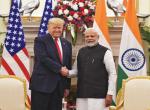

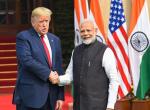
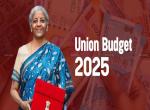
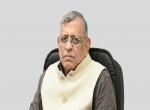
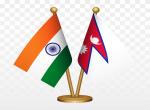
Post new comment